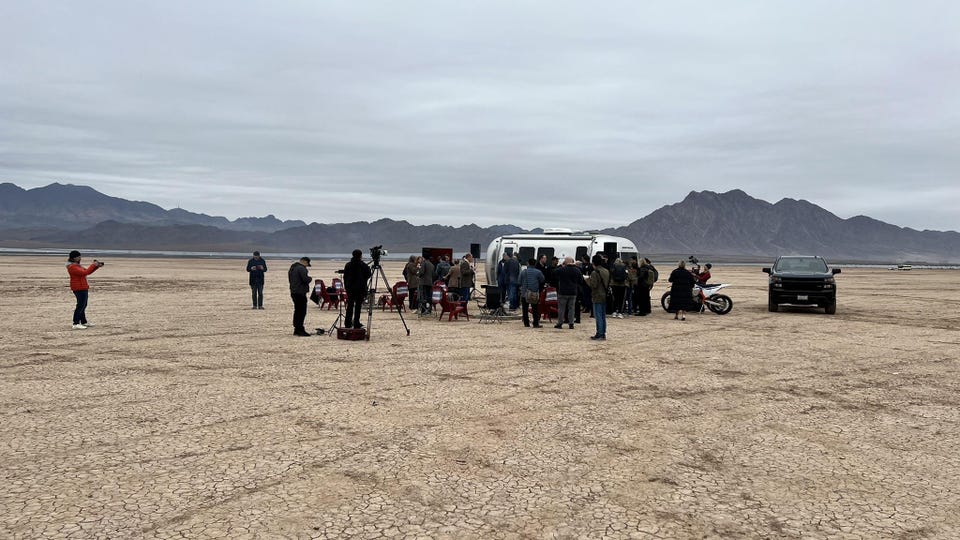Snapdragon Satellite Allows You To Message From Around The World


Snapdragon Satellite Demo site in Nevada
TIRIAS Research
There’s been an increasing interest in satellite communications with standard smartphones, largely to cover exceptional situations and emergencies where there is insufficient or no cellular service. Recently, Apple offered an emergency “SOS” text service for iPhone 14, SpaceX and T-Mobile announced plans to add satellite connectivity in 2023, and Google has stated that they will add satellite support in Android 14 later in 2023. At CES 2023, Qualcomm announced its world-wide (subject to local laws) satellite service for premium smartphones in the second half of 2023 utilizing the Iridium satellite constellation. The Qualcomm/Iridium service will be called Snapdragon Satellite and will offer full two-way texts, not just emergency messages. But no voice, image, or streaming services are available at this point. Qualcomm is also partnering with Garmin to provide the support for emergency messaging.
Qualcomm’s use of the low-earth orbit Iridium satellites operating in the L band allows the use of the standard X70 and future smartphone modems, including the latest Snapdragon 8 Gen 2 smartphone processor. Iridium satellites have polar orbits, so the coverage is from pole to pole. One of the advantages of the Iridium satellite network is that messages can be forwarded from satellite to satellite until an appropriate ground station downlink (“feeder link”) is found. The text message packet also includes location information for emergency services.
A Snapdragon Satellite-capable smartphone does require a specific antenna and support for the satellite connection L-band radio, but no special external antenna is required. That said, the user must position the phone to find the best satellite.
To demonstrate the new service, Qualcomm took a group of press and analysts to a dry lakebed about 40 minutes outside of the Las Vegas strip in order to set the right background for such a service. Ironically, while the location looked remote, it had great 5G coverage! The demonstration involved a prototype phone running a beta of the satellite app. With the prototype, Qualcomm executive Francesco Grilli located an Iridium connection and sent a message to his personal phone.

Qualcomm VP Francesco Grilli demonstrating the satellite location app on a Nevada dry lakebed
TIRIAS Research
There are plenty of remote locations with limited or no cellular coverage – like the middle of an ocean, remote mountains, deserts, etc. that would welcome additional service without needing a specialized satellite phone. The Snapdragon Satellite service will be used for a variety of purposes such as emergencies or recreational adventuring in remote, rural, and offshore locations. I expect that smartphones offering Snapdragon Satellite will be marketed to adventurers, sailors, and remote hikers, as well as for specialized workers in remote locations. Garmin will add Snapdragon Satellite to its Garmin Response service that already supports thousands of SOS incidents each year.
In addition, there will also be Snapdragon Satellite applications beyond smartphones to support other devices needing global messaging capabilities including laptops, tablets, vehicles, and IoT. Qualcomm plans to grow the Snapdragon Satellite ecosystem, with additional OEMs and app developers. Plans are to support 5G Non-Terrestrial Networks (NTN), as NTN satellite infrastructure and constellations become available.
Qualcomm said that emergency messaging on Snapdragon Satellite is planned to be available on next-generation smartphones based on the flagship Snapdragon 8 Gen 2 Mobile Platform and will launch in select regions starting in the second half of 2023. Qualcomm intends to be the service provider for the service, but it’s not clear how this will work in the wireless carriers. No pricing was announced.
The author and members of the Tirias Research staff do not hold equity positions in any of the companies mentioned. Tirias Research tracks and consults for companies throughout the electronics ecosystem from semiconductors to systems and sensors to the cloud. Members of the Tirias Research team have worked or consulted for Qualcomm, Samsung, and companies throughout the semiconductor and mobile ecosystems.
